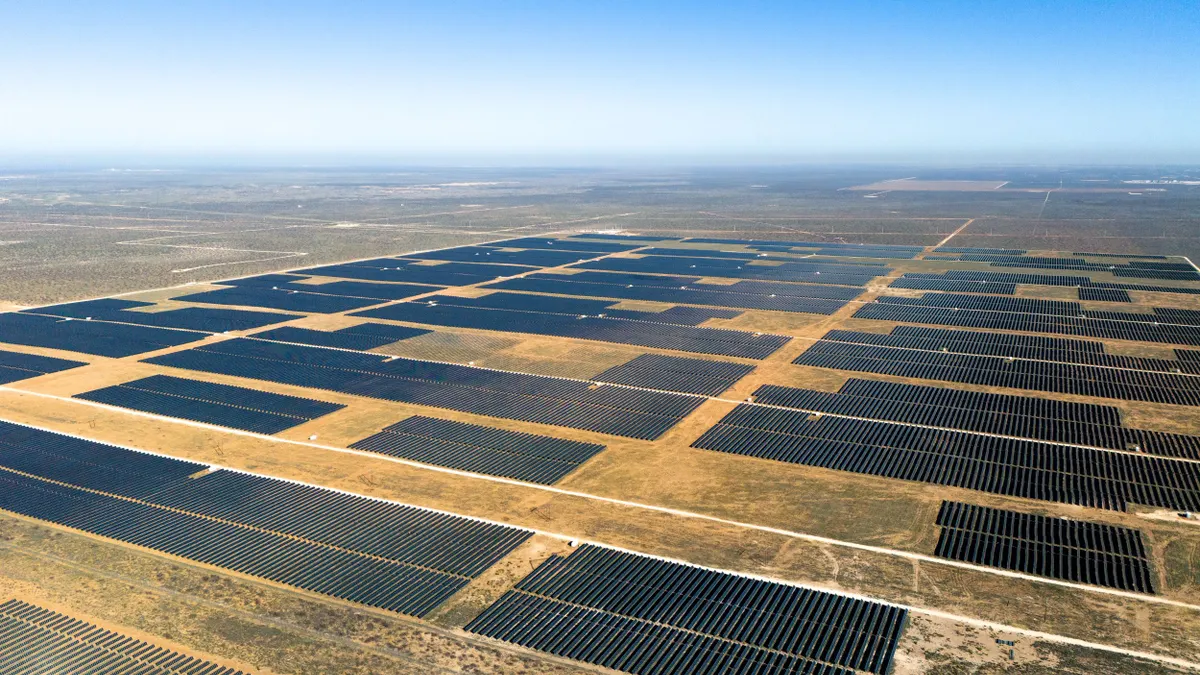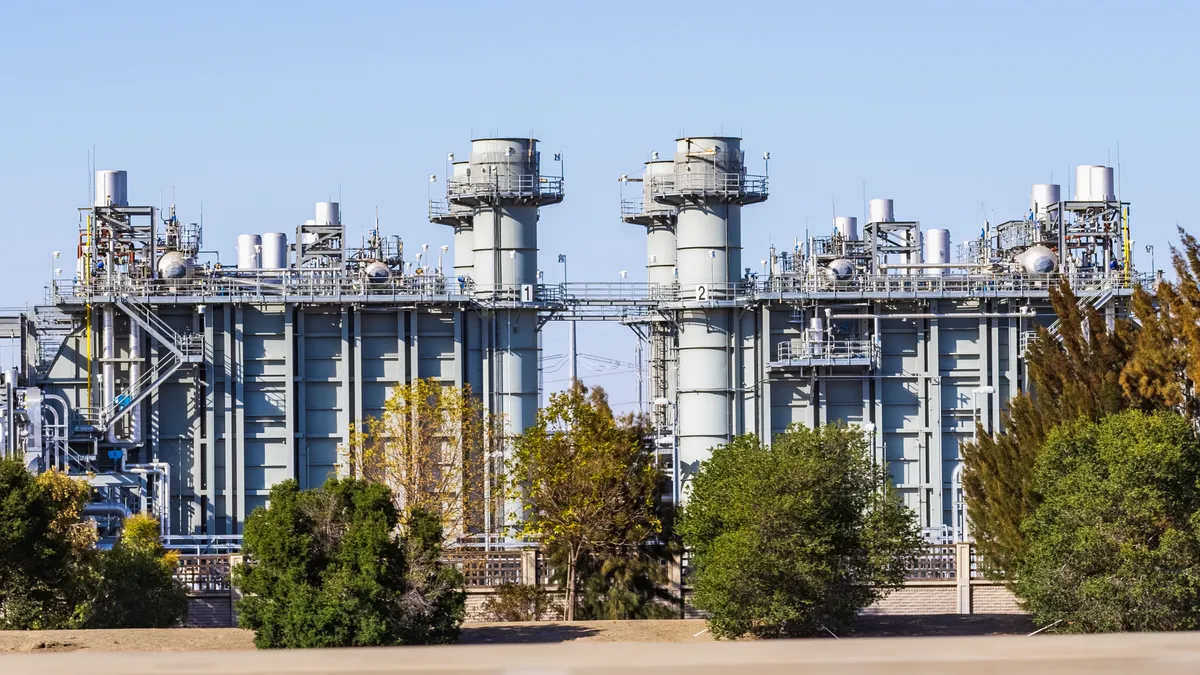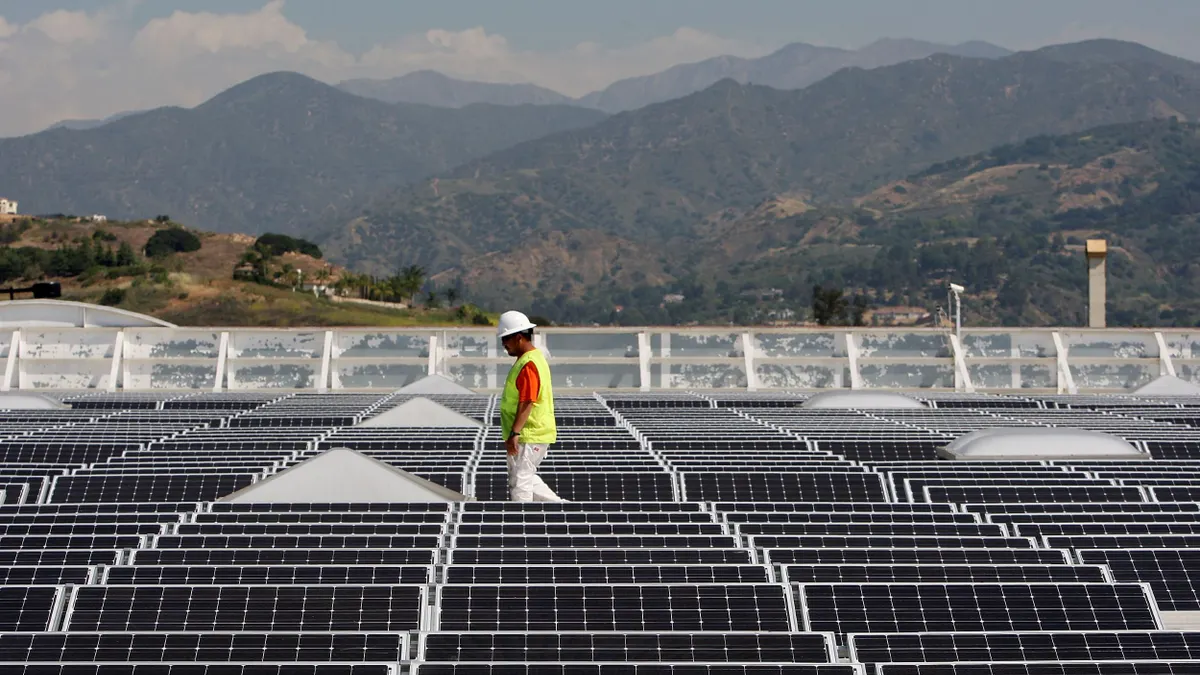As a Massachusetts proceeding that could determine the future of energy storage and distributed resources in the state neared the eleventh hour, stakeholders switched gears and headed to the negotiating table.
Rather than wait for the state's Department of Public Utilities (DPU) to hand down a decision on capacity rights for storage and DERs, utilities, clean energy companies and the state's Department of Energy Resources are instead trying to work out a mutually acceptable agreement, sources close to the discussions told Utility Dive.
The proceeding before the DPU, 17-146, addresses the ownership and control of the capacity associated with renewable energy projects, particularly energy storage projects or renewable resources paired with storage.
Stakeholders filing and replying to comments originally had a July 18 deadline, but the DPU on July 16 extended the deadline to July 25, which is now the deadline for the stakeholders to negotiate an agreement.
For developers, ownership of capacity rights, which entails control of the dispatch of a generator or storage resource, is key to the development of energy storage and distributed renewables in Massachusetts. With the rights, developers could access a new revenue stream in the capacity market that can make more projects viable. Without them, they say, the growth of these clean energy resources will be stifled.
Storage capacity rights
Last June, Massachusetts set a 200 MWh by 2020 energy storage target. The state had already laid the groundwork for energy storage development through a series of demonstration projects under its Advancing Commonwealth Energy Storage (ACES) program, but a true commercial market for energy storage has yet to take off as developers await clarity on the state's rules for storage.
One of the key topics in the proceeding – and now in the negotiations – are the rules that will govern the Solar Massachusetts Renewable Target (SMART) program, which is seen as the main state program for commercial energy storage projects.
The issues under discussion in the negotiations, however, reach back further than the SMART program. The question of who owns the rights to the capacity of renewable energy projects first arose in connection with the state's net metering rules.
When Massachusetts' net metering program for solar power was set up, the DPU allowed – but did not require utilities – to bid capacity from the solar facilities into ISO-New England's Forward Capacity Market (FCM).
The utilities claimed that right of first refusal, but never used it. They did not bid the capacity of net metered solar projects into the FCM because of a DPU ruling that the utilities could not recover the administrative costs associated with bidding into the capacity market.
When the utilities declined to exercise their right of first refusal, some developers eventually claimed the capacity rights after they figured out how to aggregate the capacity of their solar projects so they could bid into the FCM. The utilities protested, leading to the opening of a docket at the DPU on the issue. The DPU eventually combined that proceeding with others, resulting in the pending case.
Since the original filing, the issue has become more complicated because ISO-New England has set up its Competitive Auctions with Sponsored Policy Resources (CASPR) program that aims to mitigate the effect of state subsidies, such as zero emission credits for nuclear plants, on the FCM.
CASPR includes performance measures for capacity resources that bid into the FCM. Adding performance measures changes the equation for bidding into the capacity market because the prospect of capacity revenues is now tempered with the risk have having to pay a non-performance penalty.
All those factors are at play in the negotiations now underway. The central tension is whether to preserve utility ownership of capacity rights under the SMART program — as they stand under net metering — or if they should be sold or given to renewable energy developers.
Coming to a decision will require striking a balance between the rights of regulated utilities while providing incentives sufficient to encourage the build-out of renewable resources by developers in a competitive market, the goal of the SMART program.
In the state's original conception, utilities were given the capacity rights of net metered solar projects as a means of offsetting the costs of the net metering program that would be passed on to ratepayers.
That arrangement did not become an issue until developers began to aggregate the capacity from solar installations and until the SMART program allowed for the co-location of energy storage with solar power projects, potentially making it more feasible to sell capacity from a solar-plus-storage project.
Renewable energy developers say the ability to sell capacity from such projects could make storage-paired resources more viable in New England, decreasing the region's dependence on natural gas and fuel oil while lowering customer bills during time of peak power demand. But utilities are fighting to keep the capacity rights, arguing they could be sold to offset costs of the program to other ratepayers.
As stakeholders work through these issues a couple of key questions have risen to the top, sources said. Among them is the creation of an option that would allow developers to buy out a utility's right of first refusal for capacity rights.
Competing solutions
There is no guarantee that stakeholders will adhere to the positions they laid out in their filed comments, the sources said. But the filed comments provide an indication of how the various stakeholders are approaching the issue.
In comments, groups such as the Northeast Clean Energy Council and the Solar Energy Industries Association argued that utilities are unlikely to aggressively pursue capacity rights in a way that would lead to a meaningful reduction in costs for ratepayers.
Advocates say developers and clean energy companies are in a better position and more comfortable assuming the risk associated with pursuing capacity revenues and, therefore, they are more likely to be successful in reducing costs for utility customers. The clean energy advocates argued that the clearest path to cost reductions for customers is to give developers the option of buying out utilities' right of first refusal for capacity rights.
The state's attorney general was wary that developer ownership of capacity rights would deprive customers of cost reductions, but also noted the failure of the utilities to provide any benefits to customers from capacity payments. In her filed comments, the AG suggested that the owners of SMART facilities could serve as “load reducers" and thereby capture ratepayer benefits while avoiding the risks of participating in the FCM.
In its filed comments, National Grid, the parent company of several Massachusetts utilities, staked out a position that called for the utility company to retain capacity rights and either register to sell capacity into the FCM or, alternatively, register the capacity with the ISO-New England, but not engage in a capacity supply obligation and only be available during periods of scarcity.
The second option could allow a SMART facility to earn performance revenues without subjecting it to risk of performance penalties.
It remains to be seen if the parties can reach agreement on these issues. Aside from the wide difference visible in the positions laid out in the comments, there are several other issues that could scuttle negotiations, such as the price of a buy-out or the event that would trigger a buy-out.
The DPU, meanwhile, is preparing to review stakeholders' positions when the comment period ends and then will take "the appropriate next steps," which could include additional technical conferences or requests for information, prior to issuing an order regarding net metering facility participation in the FCM.
As Massachusetts works to finalize its rules, the regional market for rooftop solar appears to be picking up, demonstrating the ability of distributed resources to offset polluting plants. During a recent heatwave, behind-the-meter solar contributed 2 GW of generation during the mid-afternoon, ISO-NE said in a July 17 release, decreasing system demand and moving the peak later in the day, when temperatures are lower.
With demand tempered by the solar, ISO-NE "had to call only minimally on older coal and oil resources," the grid operator said.





















